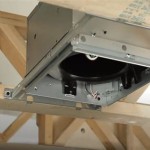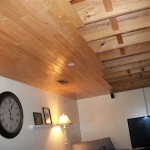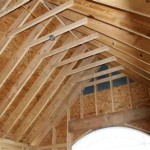Ceiling Design Images for Living Room: Elevating the Aesthetic and Functionality
The ceiling, often overlooked, represents a significant opportunity to enhance the aesthetic appeal and functionality of a living room. Ceiling design images reveal a diverse range of options, from simple, clean lines to elaborate, multi-tiered structures. The selection of a suitable ceiling design should consider the existing architectural style, room dimensions, lighting requirements, and the desired overall ambiance.
A well-designed ceiling can perform several functions beyond mere visual appeal. It can conceal unsightly ductwork, wiring, or plumbing. It can improve acoustics, contributing to a more comfortable and enjoyable living space. Furthermore, the integration of appropriate lighting fixtures within the ceiling design can significantly impact the room's illumination and mood.
Understanding the available ceiling design options and their implications is crucial for homeowners and designers seeking to create a captivating and functional living room. This article explores various ceiling design concepts, highlighting their features, benefits, and suitability for different living room styles. Examining ceiling design images provides a visual representation of these concepts, aiding in the decision-making process.
Types of Ceiling Designs
Several distinct types of ceiling designs are commonly employed in living rooms. Each type offers a unique aesthetic and functional advantage. Understanding these different types is essential for selecting the most appropriate design for a given space.
Flat Ceilings: This is the most common and simplest type of ceiling. A flat ceiling is a single, level surface, typically constructed from drywall. Flat ceilings are versatile and complement a wide range of architectural styles. They are also the most cost-effective option. The simplicity of a flat ceiling allows for flexibility in lighting design and wall decor. However, flat ceilings may lack visual interest compared to more elaborate designs.
Dropped Ceilings (Suspended Ceilings): Dropped ceilings, also known as suspended ceilings or false ceilings, are installed below the existing structural ceiling. They consist of a grid system suspended from the original ceiling, with panels placed within the grid. Dropped ceilings are often used to conceal ductwork, wiring, and plumbing, and can also improve acoustics. The panels are available in various materials, including mineral fiber, metal, and wood. While dropped ceilings offer functional benefits, they can reduce the ceiling height of the room. The aesthetic appeal often lies in the grid and panel style chosen.
Tray Ceilings: A tray ceiling features a recessed section in the center of the ceiling, creating a raised border around the perimeter. This design adds visual depth and dimension to the room. Tray ceilings can be further enhanced with decorative moldings, paint, or lighting. They are particularly well-suited for larger living rooms with higher ceilings. The central recessed area provides an opportunity for installing a statement light fixture or incorporating a unique paint color. The cost is relatively moderate, making it a popular option for those seeking moderate visual enhancement.
Vaulted Ceilings: Vaulted ceilings are characterized by their angled planes that rise to a central point. This design creates a sense of height and spaciousness. Vaulted ceilings are often found in homes with exposed beams or rafters, adding a rustic or contemporary touch. They can significantly enhance the natural light within the room. However, vaulted ceilings can be more challenging and expensive to construct than other types. Insulating a vaulted ceiling correctly is crucial for energy efficiency.
Coffered Ceilings: Coffered ceilings feature a grid of recessed panels, creating a decorative and architectural element. This design adds visual interest and sophistication to the room. Coffered ceilings are typically constructed from wood or drywall and can be customized with decorative moldings and finishes. They are well-suited for formal living rooms or those with traditional architectural styles. The intricate detail adds a sense of luxury and can contribute to improved acoustics by diffusing sound waves. They often represent a significant investment due to the complexity of the construction.
Beam Ceilings: Beam ceilings incorporate exposed wooden beams, adding a rustic or contemporary touch to the living room. The beams can be structural or decorative. Beam ceilings can be combined with other ceiling designs, such as flat or vaulted ceilings. They add warmth and character to the space. The type of wood and the arrangement of the beams significantly influence the overall aesthetic. Careful consideration of the beam spacing and stain color is important for achieving the desired look.
Materials Used in Ceiling Design
The choice of materials for ceiling design significantly impacts the overall aesthetic, durability, and functionality of the living room. Various materials are available, each with its own set of properties and characteristics.
Drywall: Drywall is the most common material used for flat ceilings and for creating the framework for other ceiling designs. It is relatively inexpensive, easy to install, and can be painted or textured to achieve a desired finish. Drywall is also fire-resistant. However, drywall is susceptible to water damage and can be dented or scratched. It requires proper taping and finishing for a smooth, seamless appearance.
Wood: Wood is a popular material for beam ceilings, coffered ceilings, and for adding decorative accents to other ceiling designs. It offers warmth, character, and a natural aesthetic. Wood can be stained, painted, or left natural. Different wood species offer varying degrees of durability and visual appeal. Wood requires proper sealing and maintenance to prevent warping or cracking. It can also contribute to improved acoustics by absorbing sound waves.
Metal: Metal is used in dropped ceilings, and can also be incorporated as decorative accents in other ceiling designs. Metal panels are durable, fire-resistant, and easy to clean. Metal ceilings can add a modern or industrial touch to the living room. They are available in various finishes, including brushed, polished, and painted. Metal can reflect light, enhancing the brightness of the room. However, metal can be more expensive than other ceiling materials.
Acoustic Panels: Acoustic panels are designed to improve the sound quality within the living room. They are typically made from mineral fiber, fiberglass, or foam. Acoustic panels can be installed as part of a dropped ceiling or mounted directly to the existing ceiling. They are available in various sizes, shapes, and colors. Acoustic panels are particularly well-suited for living rooms that are used for home theater or music listening.
Plaster: Plaster is a traditional material used for creating smooth, seamless ceilings. It offers a durable and elegant finish. Plaster can be molded into intricate designs and patterns. It also provides good acoustic properties. However, plaster is more expensive and labor-intensive to install than drywall. It requires skilled craftsmanship for a flawless application. Repairing plaster can also be challenging.
Lighting Integration in Ceiling Design
Lighting plays a crucial role in enhancing the aesthetic and functionality of a living room ceiling design. Proper lighting can accentuate the architectural features of the ceiling, create a desired ambiance, and provide adequate illumination for various activities.
Recessed Lighting: Recessed lighting is a popular choice for living rooms. These fixtures are installed within the ceiling, creating a clean and unobtrusive look. Recessed lighting can be used to provide general illumination, accent lighting, or task lighting. They are particularly well-suited for flat ceilings and dropped ceilings. The spacing and the type of bulb used are critical for achieving the desired light level. Dimmable recessed lights offer flexibility in adjusting the brightness.
Chandeliers: Chandeliers are statement lighting fixtures that can add elegance and sophistication to a living room. They are typically suspended from the center of the ceiling and can be used to provide ambient lighting. Chandeliers are available in various styles, sizes, and materials. They are particularly well-suited for tray ceilings and high ceilings. Choosing a chandelier that is proportional to the room size is essential for visual balance.
Pendant Lights: Pendant lights are suspended from the ceiling and can be used to provide task lighting or accent lighting. They are available in various styles and can be grouped together for a more dramatic effect. Pendant lights are well-suited for illuminating specific areas of the living room, such as a reading nook or a coffee table. The height of the pendant lights should be carefully considered to avoid obstructing views or creating glare.
Track Lighting: Track lighting consists of a series of individual light fixtures mounted on a track. The track can be mounted on the ceiling or walls. Track lighting offers flexibility in directing light to specific areas of the room. It is well-suited for highlighting artwork or architectural features. Track lighting is available in various styles and finishes.
Cove Lighting: Cove lighting involves installing light fixtures behind a molding or ledge, creating a soft, indirect glow. This type of lighting can add warmth and ambiance to the living room. Cove lighting is often used in conjunction with tray ceilings or vaulted ceilings. The type of light source used in cove lighting can significantly impact the color and intensity of the light.
Integration with Smart Home Systems: Modern ceiling designs can be integrated with smart home systems for automated lighting control. This allows for adjusting the brightness, color temperature, and on/off status of the lights via a smartphone or voice command. Smart lighting systems can also be programmed to change the lighting based on time of day or activity. This level of control contributes to creating a more comfortable and energy-efficient living space.

15 Living Room Ceiling Designs You Need To See Top Inspirations

Stunning Ceiling Design Ideas For Drawing Rooms

Best False Ceiling Design Ideas For Living Rooms In 2025 Gyproc

50 Budget Friendly False Ceiling Designs For Every Home 2025

Designer Modern Living Room False Ceiling Service At 50 Sq Ft In Bengaluru Id 23245356348

60 Latest Pop Ceiling Designs For Hall 2025

Luxurious Modern Living Room And Ceiling Designs Trend Of 2024 Plan N Design

Living Room Ceiling Design In Bhubaneswar By Rajdhani Interior Id 25535352562
.jpg?strip=all)
20 False Ceiling Design Ideas To Transform Your Home Decor

Round Pop Designs For Your Home D Cor Beautiful Homes
Related Posts








